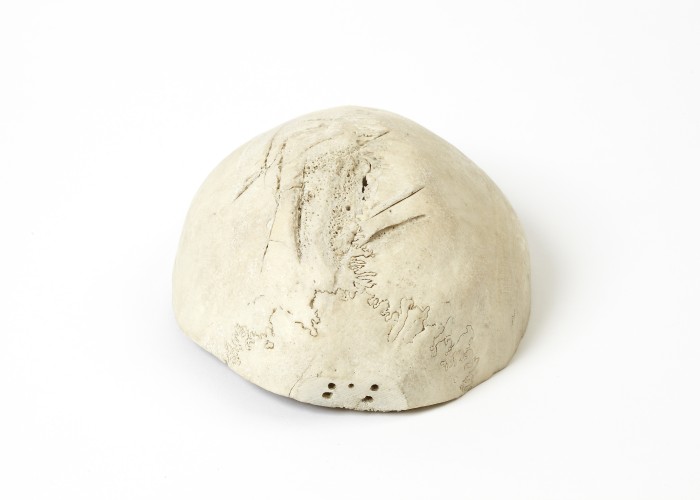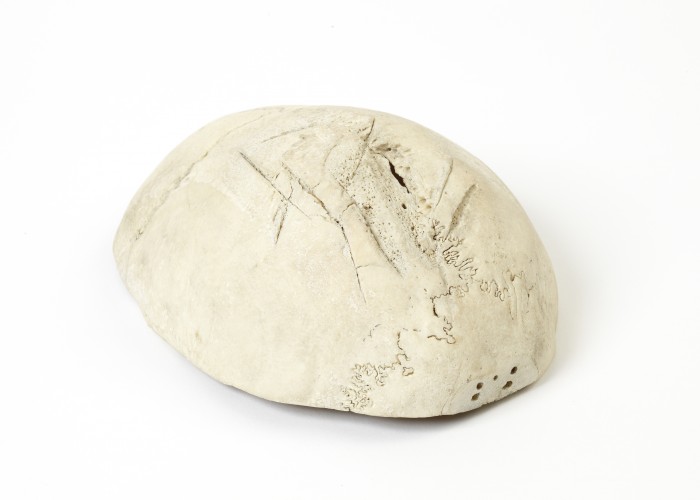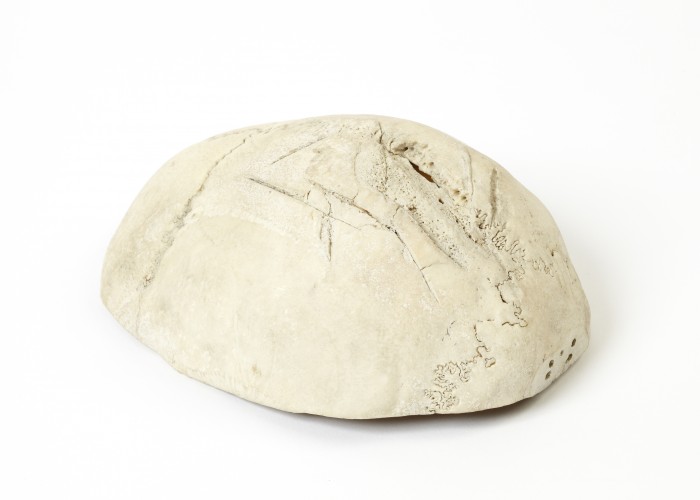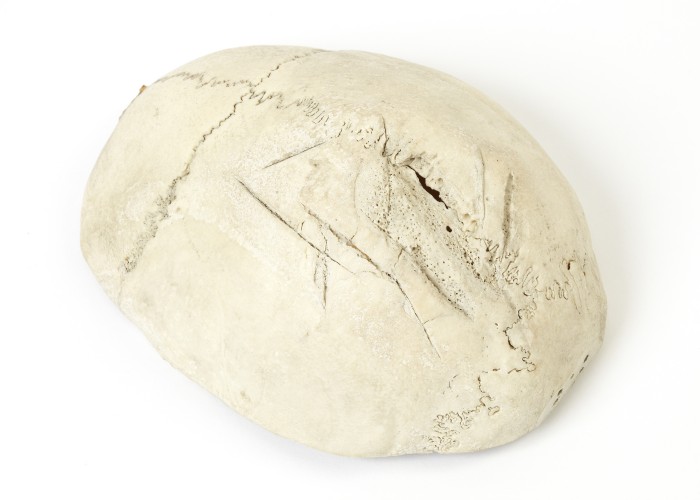Skull Sliced by Sabre Cuts

 Skull of a wounded soldier recovered from Waterloo. Copyright Surgeons' Hall, Edinburgh.
Skull of a wounded soldier recovered from Waterloo. Copyright Surgeons' Hall, Edinburgh.
 Skull of a wounded soldier recovered from Waterloo. Copyright Surgeons' Hall, Edinburgh.
Skull of a wounded soldier recovered from Waterloo. Copyright Surgeons' Hall, Edinburgh.
 Skull of a wounded soldier recovered from Waterloo. Copyright Surgeons' Hall, Edinburgh.
Skull of a wounded soldier recovered from Waterloo. Copyright Surgeons' Hall, Edinburgh.
 Skull of a wounded soldier recovered from Waterloo. Copyright Surgeons' Hall, Edinburgh.
Skull of a wounded soldier recovered from Waterloo. Copyright Surgeons' Hall, Edinburgh.
This is the upper skull of a French soldier who fought at the Battle of Waterloo. It has multiples cuts on it, from sword wounds suffered by the soldier. Judging by their size and shape, they were probably inflicted by a British cavalry sabre, a weapon that was designed to cause long, slashing injuries. The skull was taken after the battle by a British surgeon for use as a teaching aid to medical students.
A cut down the centre of the skull has almost penetrated the brain, but the other cuts are fairly superficial. They may not have all occurred at the same time, and sepsis (infection) might have resulted in erosion of the outer layer of bone surrounding the less serious cuts from previous injuries.
A trephine, a T-shaped instrument with a circular saw at the end, was sometimes used on fractures of the skull in order to remove any fragments and reduce pressure on the brain from internal bleeding. Due to the lack of knowledge about the brain and high death rate of any surgical procedures performed on the skull, many head injuries were not operated on at all. It was really down to luck whether or not a soldier survived first the injury, then any infection that occurred afterwards.
This skull belonged to one of Napoleon’s heavy cavalry soldiers. The skull was recovered from the battlefield by Sir Charles Bell (1774-1842), who helped to treat wounded men in the aftermath of the Battle of Waterloo. The body of the dead French soldier was macerated (boiled to remove the flesh and other soft tissues) then the skull removed, cleaned and dried. Bell used the skull as a teaching aid for students and trainee surgeons. Sir Charles Bell was also a fine artist, who painted 17 fine watercolours of soldiers injured at the battle.
-
Curatorial info
- Originating Museum: Surgeons' Hall, Edinburgh.
- Production Date: 1815
- Creator: Sir Charles Bell
- Material: Bone
- Creation Place: Brussels
- Technique: Maceration
-
Use this image
You can download and use the high resolution image for use in a non-profit environment such as a school or college, but please take note of the license type and rights holder information below
- Rights Holder: Copyright Surgeons' Hall, Edinburgh. Photography Relic Imaging Ltd.
- License Type: Creative Commons
Find it here
This object is in the collection of Surgeons’ Hall Museum










